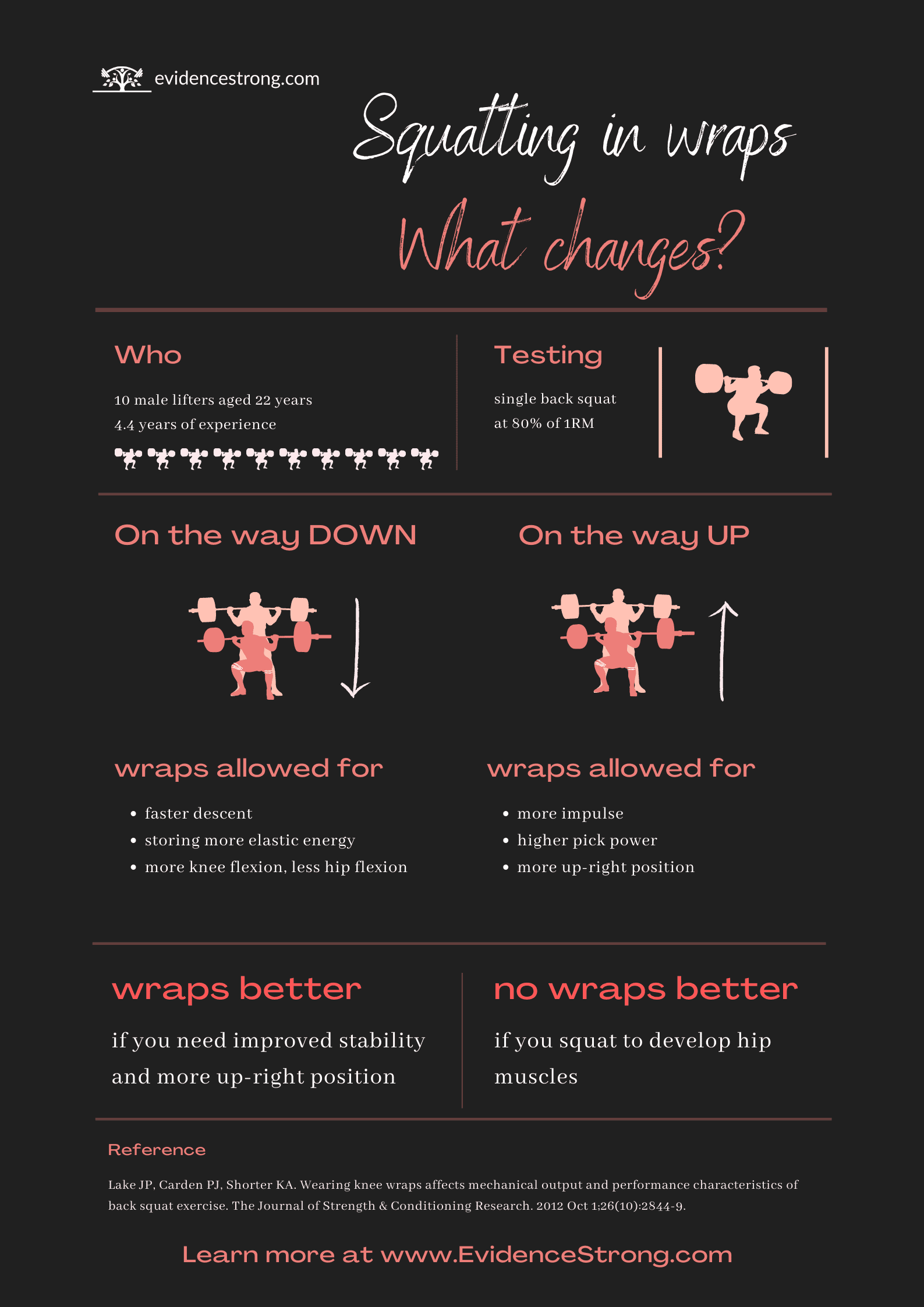Summary of a study looking at mechanics in lifters who perform 80% of 1RM squat in knee wraps or without.
Who
10 male athletes with 4.4 years of lifting experience on average, aged 21.9 ± 2.2 years (height: 171.8 ± 34.8 cm; weight: 93.3 ± 10 kg; back squat 1RM: 160.5 ± 18.4 kg) (UK). Lifters had experience squatting with knee wraps.
Design
cross-over design: after warm-up, each person lifted 3 sets of back squat single repetition at 80% of 1RM in each condition: with knee wraps or without (3 minutes rest).
1RM – 1 repetition maximum = maximal amount of weight the lifter can lift once
Wraps
- liters wearing knee wraps wraped in figure 8 shape
- 2-meters long, width 8 cm, 2 mm thickness
Nothing
- liters wearing nothing on the knee
Outcome measures
- mechanics of squatting
- bar displacement
- peak power
- duration of descent and ascent
Main results
Descent phase:
- horizontal displacement was reduced by 39%
- shorter descent phase in wraps
Ascent phase:
- vertical impulse increased with wearing knee wraps by 10% (±21)
peak power (W) increased by 10% (±24) on average when using knee wraps
No difference in:
- ascent horizontal displacement
- descent and ascent horizonal impulse
- descent vertical impulse
- lifting duration
Take home message
Original article
Lake JP, Carden PJ, Shorter KA. Wearing knee wraps affects mechanical output and performance characteristics of back squat exercise. The Journal of Strength & Conditioning Research. 2012 Oct 1;26(10):2844-9.
